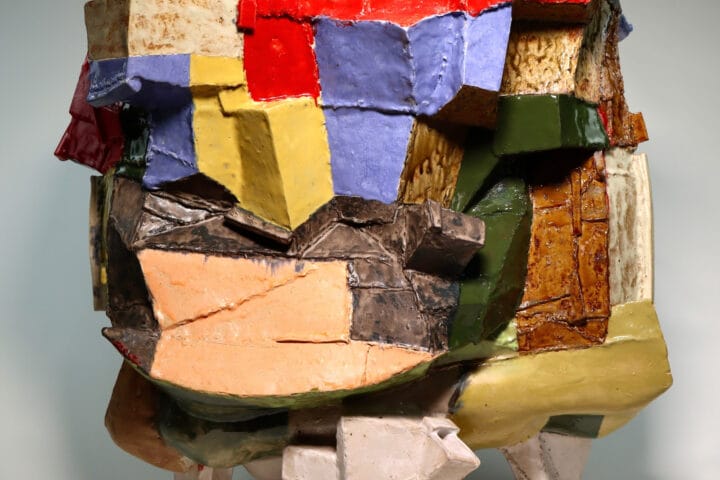SCENE 3: 16 – 27 August 2022
Spotlight: Christian Jankowski and Wang Tuo
Blindspot Gallery is pleased to present Scene 3 of Play and Loop IV, which spotlights the practices of Christian Jankowski and Wang Tuo. On one side, we will feature a selection of video works from Christian Jankowski’s expansive conceptual practice spanning more than three decades. On the other side, we will feature selection from Wang Tuo’s Northeast Tetralogy, a multi-part epic that retells the history of the Northeast China. Fundamentally different in their situational genre and hauntological approaches, Scene 3 gives a deeper dive into thinking about how artists use video to investigate and subvert the history, society, and culture we inherit and in turn participate in.
Christian Jankowski
With a prolific and international practice spanning more than three decades, German artist Christian Jankowski is known for his conceptual and often performative works where he collaborates with non-art professionals from different fields, such as fortune tellers, massage therapists, soldiers, and psychoanalysts. With humorous touch and insistent charm, the artist flips the script on symbolic orders and established systems by situating his subjects, including himself, in unfamiliar situations.
In one of his earliest works, Die Jagd / The Hunt (1992), Jankowski attempts to rebel against modern society and return to the prehistorical ways of the hunter. Armed heroically with a bow and arrow, Jankowski shot down frozen chickens, butter, toilet paper, and various other essentials in the supermarket. Instead of stalking animal preys, he eyed and avoided supermarket security cameras. Despite having arrows sticking out of his bargain hunt, he must pay like everyone else at the checkout counter, yet a quiet acquiescence to the capitalist order he plays in.
A classic work of the artist, Telemistica (1999) was Jankowski’s contribution to the 48th Venice Biennale. The artist learnt Italian and called five Italian TV fortune-tellers, asking them concerns common to many artists: is this a good idea? Will I manage to make the work with limited resources? Will the finished work be good? Will it be well received? Will I be happy with my work? The televised interaction was mostly affirmative, as the fortune tellers in their vague ways correctly predicted the work’s success for the artist’s career. In its lasting relevance, Telemistica speaks to human reliance on mystical forces in face of uncertainty and crises, aptly predicting the contemporary turn to astrology and the occult.
For the video work Massage Masters (2017), which was commissioned for the Yokohama Triennale, Jankowski invited esteemed massage therapists from the Tokyo area to diagnose the ailments of Yokohama’s public sculptures and treat them according to various massage traditions. Each massage practitioner chose the sculpture best suited to their own technique, attempting to identify and alleviate the tension within the sculpture – whether originating from the material itself or the energy of the city. Rodin’s La Meditation, for instance, was given a foot massage while a ninja sports massage therapist worked on Astushi Hosoi’s dynamic abstract sculpture, The Wind Tells. Against a sanitary institutional context where art is displayed and consumed, Jankowski seeks an intimate public that is haptic, affective, and healing.
In keeping with the curative potential of art, Jankowski recently stages Defense Mechanism (2021) where the two meanings of “Defense Mechanism,” one psychoanalytical and one military, collapse into a stark encounter. A special unit of the Romanian military forces its way into a flat, secure the perimeter, and finally realize that they are in a psychotherapist’s room. The psychotherapist enters and starts a session with the armed soldiers. They begin with questions about security, defense, cohesion, fear, and the military’s poor public image, leading to questions about being as an individual and in a collective. The work ends in an impasse as the psychotherapist announces that time is up. Defense Mechanism orchestrates an urgently needed conversation in a time of rising nationalism, ongoing geopolitical tensions, and wars, vocalizing an uncanny yet humanizing psychical portrait of these soldiers despite their militarist façades.

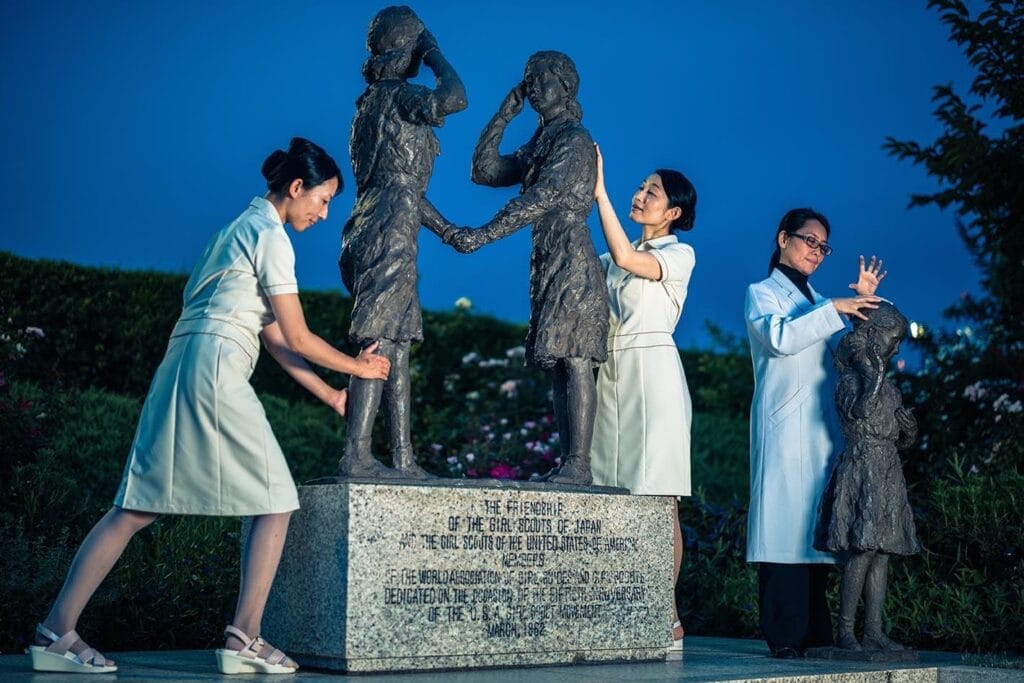
Wang Tuo
Wang Tuo’s The Northeast Tetralogy (2017-2021) is a multi-year video series that takes northeast China as an entry point, starting with the May Fourth Movement in 1919, spanning the eras of Sino-Japanese war and WWII (Manchukuo), Chinese civil war, post-war People’s Republic of China, current social events, and an imagined near future. In addition to his fieldwork and research into historical events, Wang appropriates and incorporates Chinese ghost stories, folk tales, and legends. The artist creates entangled narratives that develop and converge in a disoriented multisensorial matrix, defying the linear and causal practices of progression, temporalizing, and historiography. For the filmmaker, ghosts act as a parallel narrative for the archive of history. Embracing this uniquely Chinese hauntology, Wang proposes a notion of “pan-shamanization”, wherein physical bodies of people become the medium of historical consciousness.
On view in the gallery are two films from the Northeast Tetralogy, Smoke and Fire (2018) and Tungus (2021). In Smoke and Fire (2018), a migrant worker oscillates between two intertwined, simultaneous realities. In a film prop warehouse, the disoriented protagonist reads tales of the miraculous and the legendary. He projects himself into these stories and rehearses them vividly in his imagination. The work slowly births a counternarrative that documents the dramatic rehearsal of a recent real-life violent crime that sensationalized the Chinese news media, where Zhang Koukou witnessed in his youth the brutal beating and murder of his mother, and returned to his hometown after 22 years and killed the perpetrators in revenge. For the artist, the impulse of long-awaited revenge resonates with the complex discourse of the Northeast in its rupturing of social harmony and internal identities, laying bare the contradiction between individual pathology and an often monstrous yet powerless reality.
Tungus (2021) takes the Siege of Changchun (1948) as its primary historical context, a forgotten historical event during the Chinese civil war where hundreds of thousands of fleeing civilians starved to death in the no man’s land between the besieged KMT-held city and the Communist military blockade. In the film, two soldiers from the Korean Independent Division of the Chinese People’s Liberation Army attempt to flee the city but find themselves in an overlapping time-space of Jeju island, where the Jeju uprising has just occurred in the shadow of the Korean War. On the other hand, a middle-aged scholar who refuses to flee the city of Changchun returns to the May 4th Movement of 1919 in an illusion caused by extreme hunger, which leads him to take new actions in life. Musing on how hunger-led hallucinations form a collective conversion to “pan-shamanism,” the artist purports that these shamanized bodies connect disparate peoples and different stages of China’s history and traumatic geography, holding liminal grounds between history and future, spiritual heritage and modernity.
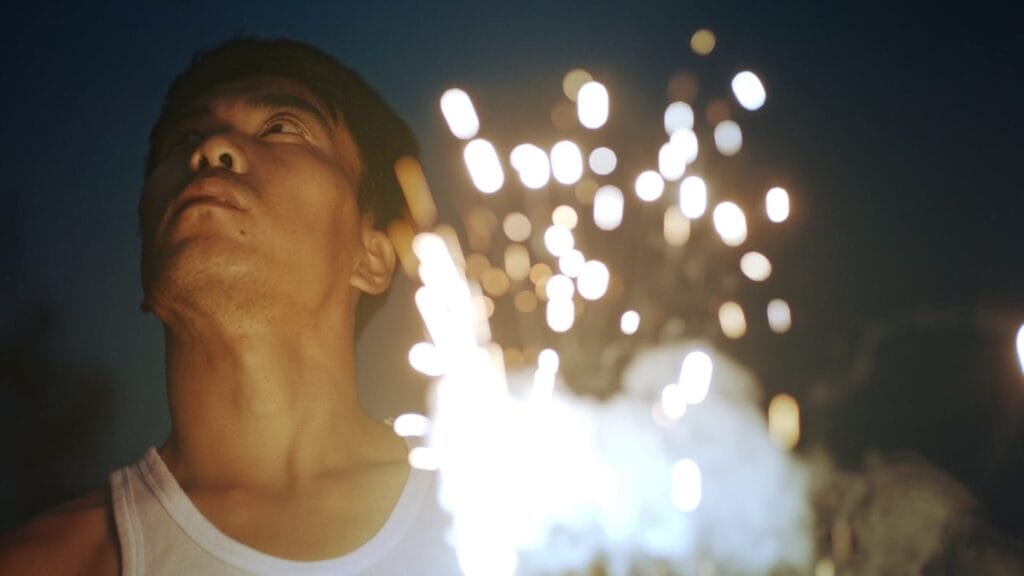
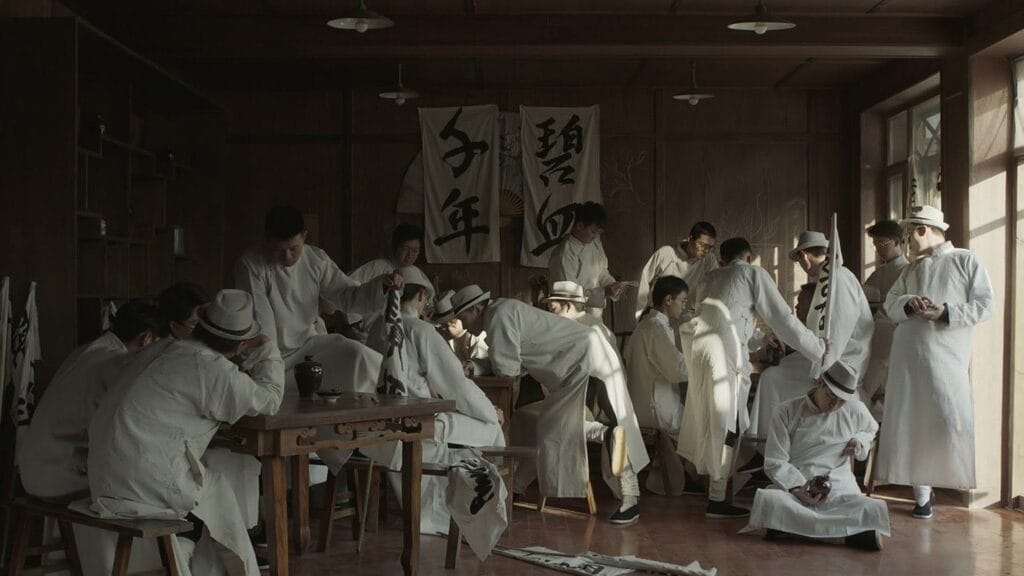
Also on view in the central atrium throughout the whole programme are the works of three Hong Kong artists restaging the sensorium of alienation, absurdity, and abeyance experienced all too intensely in the city. Yuk King Tan’s Scavenger (2008) documents the performance of street recycler Lam por por who carts a life-size cardboard model of the HSBC Lion. She laboured the heavy symbol of colonialism down the crowded arterial pedestrian way of Central. Her journey embodies the ruthless late-capitalistic logic of recycling and upcycling, freelance and precarity, scavenging and salvaging in the imminent ruin of another ordinary financial crisis. Eason Tsang Ka Wai’s
t o u c h (2019) records the artist’s repetitive process of dropping a white glove onto a glass screen. Only the split moment the glove touches the screen remains visible, its slapping arrhythmia a startling signal unpredictable to the most vigilant of viewers. Impossibly, the ultra-thin (infra-mince à Duchamp) screen becomes the closest distance between the virtual space behind the video display and the real world where audience locates. Luke Casey’s House Of A Thousand Assholes (2022) witnesses the journey of a suitcase-carrying Cantonese protagonist departing from Jardine House (the eponymous multiple-orificed skyscraper), wearily rising to the peak via the Midlevel outdoor escalator, and manically descending into the watery depth of Shek-O beach. Resolutely not returning, he personifies a new wave of sojourners emigrating in search of hope, freedom, and perhaps dignity.
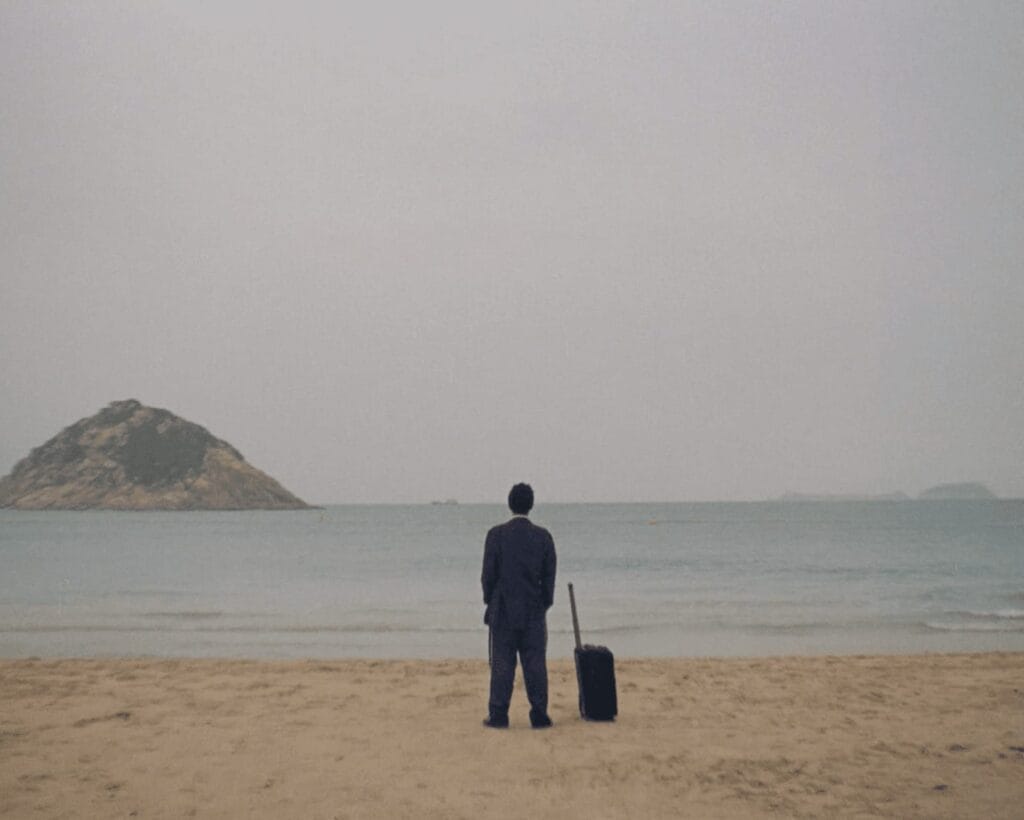
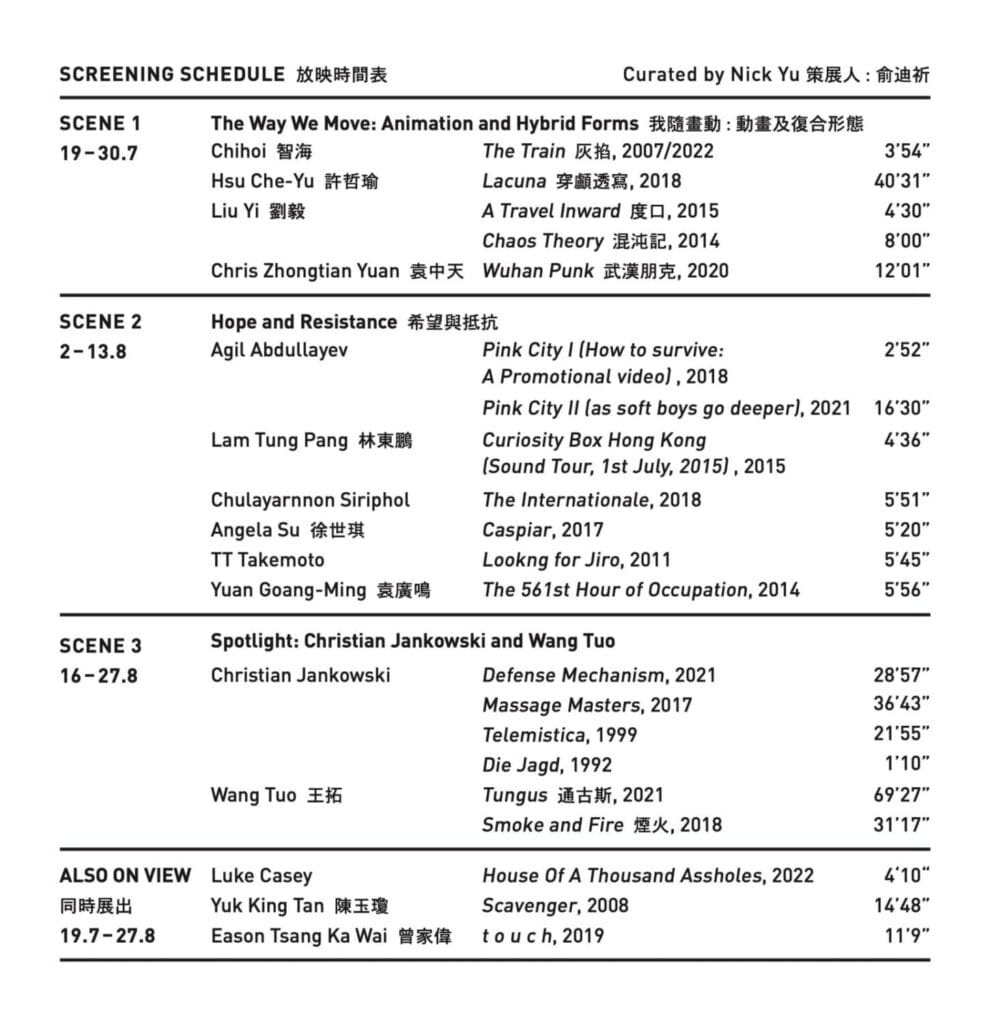
Blindspot Gallery
15/F, Po Chai Industrial Building, 28 Wong Chuk Hang Rd, Wong Chuk Hang, Hong Kong


